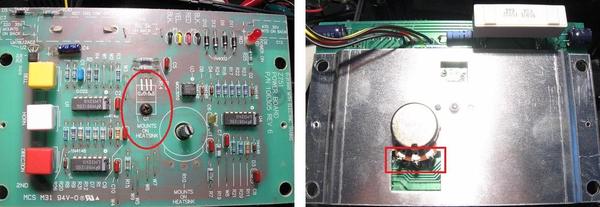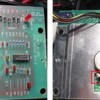When you turn on the
but, I have read other descriptions indicate that one of the diodes is reversed... Now I'm not sure.
Do you have a link to these "other descriptions"? The two diagrams you posted are identically and correct. The 2nd diagram of course just shows the horn scenario. As the footnotes in the 1st diagram suggest (or that's what I get out of it), if you are willing to live with the AC voltage drop (and rather significant wasted power) from the diodes in normal operation, then you can maintain a relatively constant effective AC voltage when the horn or bell is pressed.
I believe the "last word" has been written on the diode solution/method in that it has been discussed, tried and tested, etc. etc. for decades in dozens of OGR threads. IMO there's really nothing more to be said. Extremely cost effective - less than $1 in parts. If you want to get the job done quickly, cheaply, etc. use the diode method. 1-2-3-done.
Moving on.
There was a somewhat "tedious" discussion here on the issue of DC offset. Lots of math, integrals, etc.. The point is with semiconductor switches (triacs, transistors) you can be much more power efficient. The simplest method which I'd call the 20 year old solution would be to go with a triac-based solution. This would look something like:

which are the guts of a MTH Z-750 controller which is triac-based. That's a heck of a lot of components and it does more than what is asked for by the OP but gives an idea of what's involved. The component cost is actually trivially small. Resistor, capacitors, etc. are a few pennies each. The IC chips shown are maybe 25 cents each. The triac is maybe 50 cents each. It's just a lot of parts for a DIY. Other than a learning exercise I can't imagine anyone doing it this way in 2017.
GRJ posted some nice oscilloscope photos in that thread showing the concept of asymmetrically shifting the chopping point of the AC waveform on the positive and negative cycles to effect a DC offset.
So what I'll call the 10 year old solution is to use transistors (specifically FETs) to implement the asymmetrical chopping. Much more power efficient than triacs. My understanding is this is how the more recent MTH Z-controller performs the asymmetrical chopping of positive and negative AC. In other words this is the replacement to the Z-500 and Z-750 triac design. But, again, I do not see anyone doing this in 2017.
If doing this today, I'd go with a microcontroller-based design using FETs to chop the waveform. The microcontroller can be of the $1 or less ilk. So it's not the cost but rather the need to develop software - not particularly complicated software but probably not something that's floating around in the Arduino world where you "just" need to change a few line of code here and there to adapt it to this application.
In looking at the Z-750 controller picture above, the presence of a single $1 microcontroller chip would whack away dozens of components.
So cutting to the chase. I don't see the value in developing a circuit to simply insert a DC offset per the OP's specific application of a ZW in conventional-variable voltage DC. I stand by my statement that it is a design-option which addresses the boost/speed-up issue when the horn/whistle button is pressed. Again, it is not particularly expensive in component cost but would be a serious assembly effort.
What would interest me is if someone really had the wherewithal to implement a microcontroller-based solution to the conventional-mode controller. I've stated this before but IMO the triac was the worst-invention-ever for O-gauge AC. Yes, it performed admirably for decades but in my fantasy world we simply jumped ahead several decades to a microcontroller solution using high-frequency synthesized sinewaves (like the Z4000) rather than low-frequency 60 Hz chopping. This would be the same technology used today in your home-theater amplifiers where you get hundreds of Watts of PURE sine output in remarkably compact packages for around 10 cents per Watt rather than, say, 10 times that for an O-gauge pure or almost pure AC variable output controller.










